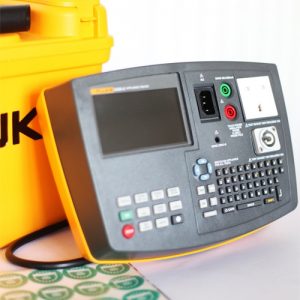What is Portable Appliance Testing?
Portable appliance testing, commonly known as PAT refers to the evaluation of portable electrical appliances for electrical faults. Movable and portable appliances are numerous such as; vacuum cleaners, PC projectors, toasters, food mixers, portable heaters, some electrical cookers, handheld hair dryers, fridges, vending machines, and desktop computers among others. Testing of appliances is sometimes visual, but it is also necessary to conduct electrical checks. Some defects in electrical systems are hard to pinpoint just by checking visually. PAT must be done by a professional with the expertise and equipment required. PAT is a large part of health and safety regulations, especially in environments where people use electrical equipment frequently.
Visual Testing
There are various procedures involved in portable appliance testing that include visual examinations as well. In some cases, users may conduct visual inspections themselves before using equipment. Here are some basics to look for.
- A damaged outer over that leaves some components loose
- Tell-tale signs of equipment suffering from overheating such as scorch marks
- A damaged plug, which can be the bent pins or the outer covering
- Damages such as fraying and scuffing on the lead
- Exposure of the coloured wires in the lead. The most common point is where the plug and the lead join
- Equipment that is operating under unsuitable environments.
A professional can conduct extensive visual checks that include inspecting for proper use of the fuse, and tightness of the terminal screws. Evaluation of the internal components of a plug is also paramount to ensure there is no water damage or overheating. An electrician will also check the terminal connections to make sure that they are correct.
Types of Appliances
Electricians doing PAT have to consider the type of portable appliances. The surroundings of the device and its uses will determine the level of inspection necessary. Another consideration is the construction of electrical equipment, which is in two types; Class I and Class II. Class I refers to earthed appliances. It means that during testing, an electrician must consider the earth connection because if it’s faulty, it can cause an electric shock. Class II equipment, on the other hand, is double insulated. It means that even with a defective appliance, there is protection against an electric shock. Testing can be done on Class II devices without the need for an earth connection. Such equipment can do with visual checks alone. Appliances with double insulation have a sign to indicate that.
Importance of PAT Testing
One goal of getting PAT for appliances is to ensure that tenants and homeowners are using the right type of equipment at home. Recently there has been a dramatic influx in second-grade products. Most people buy these goods because they are affordable. The problem is that some of these appliances don’t undergo the necessary electrical testing processes. PAT is one way to guarantee the suitability and usability of certain goods in the home. There are recommendations for renters and commercial property occupants to get testing at least once every year.
Safety is a concern that a lot of people share when using portable appliances. Electrical faults can be quite dangerous and can pose several risks. For example, exposed wires can lead to fire accidents. Wires that come into contact with water can result in electrocution or shocks. Electrical appliances that are too old may also cause damage to residential homes or commercial places. With PAT testing, an electrician can establish any potential risks and take measures to fix the problem. Ensuring that portable appliances are safe meets health regulations, which are must-haves in certain settings.
Conducting electrical testing on appliances in a company is the best way to ensure that workers have proper and safe equipment for their operations. When the tools and equipment that workers are using can function optimally, then it improves production. A lot of downtime arises from electrically faulty machinery. Having to wait until a problem comes up to get repairs will inconvenience workers. By arranging frequent testing, you ensure that appliances get the required repairs or replacements before they begin to malfunction.
PAT can also be an insurance requirement. For a residential or commercial building, a landlord may be required to provide PAT regularly for insurance purposes. Minimising the risks of electrical accidents will work favourably when securing an insurance policy. The same applies to companies. Guaranteeing workers’ safety will vote well in case there is an accident. It also reduces the chances of getting sued in case an accident causes damage. Company owners must also protect the people that will visit their premises.
Whether it the home or place of business, it is important to find out the appliances that require electrical testing. Not all portable equipment have to undergo PAT. After electrical testing processes, electricians provide reports to indicate the findings. They show if an appliance has failed or passed the test. These reports are essential in proving adherence to regulations and safety standards.


No comments yet. Be the first!